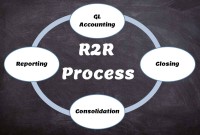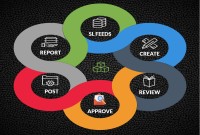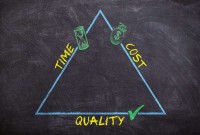- Home
- Business Processes
- Industry Knowledge
- Aerospace Industry
- Automotive Industry
- Banking Domain
- BFSI Industry
- Consumer/ FMCG Industry
- Chemicals Industry
- Engineering & Construction
- Energy Industry
- Education Domain
- Finance Domain
- Hospitality Domain
- Healthcare Industry
- Insurance Domain
- Retail Industry
- Travel and Tourism Domain
- Telecom Industry
- Leadership Skills
- eLearning
- Home
- Business Processes
- General Ledger (Record to Report)
- Global Business Services (GBS) Model
Global Business Services (GBS) Model
Global business services (GBS) is an integrated, scalable, and mature version of the shared services model. Global Business Services Model is a result of shared services maturing and evolving on a global scale. It is represented by the growth and maturity of the Shared services to better service the global corporations they support.
Global business services (GBS) is an integrated, scalable, and mature version of the shared services model. Global Business Services Model is a result of shared services maturing and evolving on a global scale. It is represented by the growth and maturity of the Shared services to better service the global corporations they support. Global Business Services framework adds value to the shared services model by taking the model beyond labor arbitrage. This model adds consistent approaches to global services strategy formation, transition, and governance resulting in improved collaboration across the entire enterprise ecosystem. GBS provides services beyond transactional functions and provides value to the organization by enabling standardization, scalability, technology, well defined and optimized processes and business analytics. Under this model the entire organization collectively start leveraging global business services to accelerate attainment of corporate strategies.
General Electric, Bank of America, American Express are some examples who have already established Global Business Services model for their entire finance functions where a Global Operations Finance Team provides record to report and statutory and tax compliance services to all the businesses under its umbrella.
Main Features of GBS model:
- Integrated compilation of service offerings for multiple support functions within a company
- Global in nature with respect to both delivery centers and customers
- Service provides can be both internal and/or external
- Service providers are managed centrally by GBS organization
- Service offerings by GBS are standardized and follow process model with defined roles and responsibilities and handshakes at each interaction
- Global process ownership
- Integrated application suite(s)/Information Systems across the enterprise with well-defined processes and best practices
- Virtual centers of expertise to build and disseminate subject-matter expertise
- Defined and well tracked operational metrics to measure speed, quality and costs
- Standardization of processes and practices that result in the GBS organization being run like an independent entity
- Ability to take competitive advantage of cost arbitrage and third party expertise
- Mix of service delivery models - Captive offshore; In-house shared services centers; outsourced delivery models; “hybrids”
Value drivers of GBS Model
- Cost savings through economies of scale and labor arbitrage
- Simplification and standardization of processes
- Advanced analytics and visibility across different structures (legal/operational) of the enterprise
- Ability to hire and retain global talent
- Skill arbitrage: value derived from access to higher-skilled labor across globe
- Ability to work in shifts leveraging the time zone differences across globe
- Ability to deploy advanced tools and technology
- Ability to deliver scalability to processes and functions
Functions that can be shared across business units
- Sourcing and Procurement
- Buy to Pay – Accounts Payable
- Invoice to Cash – Accounts Receivable
- Payroll Management
- Record to Report – General Ledger
- Fixed Assets Management
- Statutory Reporting and Tax Reporting
- Human Resources
- Information Technology
- Vendor Management
- Customer Management
- Master Data Maintenance
All the models described above represent matrix structures. However, Matrix Structures can become overly complex, effectively having to uphold two hierarchies, with potential tensions between the two.
Related Links
You May Also Like
-
In this article we will focus on and understand the accounting process which enables the accounting system to provide the necessary information to business stakeholders. We will deep dive into each of the steps of accounting and will understand how to identify accounting transactions and the process for recording accounting information and transactions.
-
As the business grows, the company may want to transition to a branch structure as branches are allowed to conduct a much broader range of activity than representative offices. Branches can buy and sell goods, sign contracts, build things, render services, and generally everything that a regular business can do. A company expands its business by opening up its branch offices in various parts of the country as well as in other countries.
-
Record to report (R2R) is a finance and accounting management process that involves collecting, processing, analyzing, validating, organizing, and finally reporting accurate financial data. R2R process provides strategic, financial, and operational feedback on the performance of the organization to inform management and external stakeholders. R2R process also covers the steps involved in preparing and reporting on the overall accounts.
-
Concept of Representative Office
A representative office is the easiest option for a company planning to start its operations in a foreign country. The company need not incorporate a separate legal entity nor trigger corporate income tax, as long as the activities are limited in nature.
-
In most of the automated financial systems, you can define more than 12 accounting periods in a financial year. This article will explain the concept of the adjustment period and the benefits of having adjustment periods. Adjustment periods have their inherent challenges for the users of financial statements and there is a workaround for those who don’t want to use adjustment periods.
-
Internally, an organization can be structured in many different ways, depending on their objectives. The internal structure of an organization will determine the modes in which it operates and performs. Organizational structure allows the expressed allocation of responsibilities for different functions and processes to different entities such as the branch, department, workgroup and individual.
-
Operational Structures in Business
Large organizations grow through subsidiaries, joint ventures, multiple divisions and departments along with mergers and acquisitions. Leaders of these organizations typically want to analyze the business based on operational structures such as industries, functions, consumers, or product lines.
-
In this article, we will explain the general Ledger journal processing flow from entering journals to running the final financial reports. Understand the generic general ledger process flow as it happens in automated ERP systems. The accounting cycle explains the flow of converting raw accounting data to financial information whereas general ledger process flow explains how journals flow in the system.
-
Introduction to Organizational Structures
Organizations are systems of some interacting components. Levitt (1965) sets out a basic framework for understanding organizations. This framework emphasizes four major internal components such as: task, people, technology, and structure. The task of the organization is its mission, purpose or goal for existence. The people are the human resources of the organization.
-
Although technically a general ledger appears to be fairly simple compared to other processes, in large organizations, the general ledger has to provide many functionalities and it becomes considerably large and complex. Modern business organizations are complex, run multiple products and service lines, leveraging a large number of registered legal entities, and have varied reporting needs.
Explore Our Free Training Articles or
Sign Up to Start With Our eLearning Courses

About Us
Learning
© 2023 TechnoFunc, All Rights Reserved










